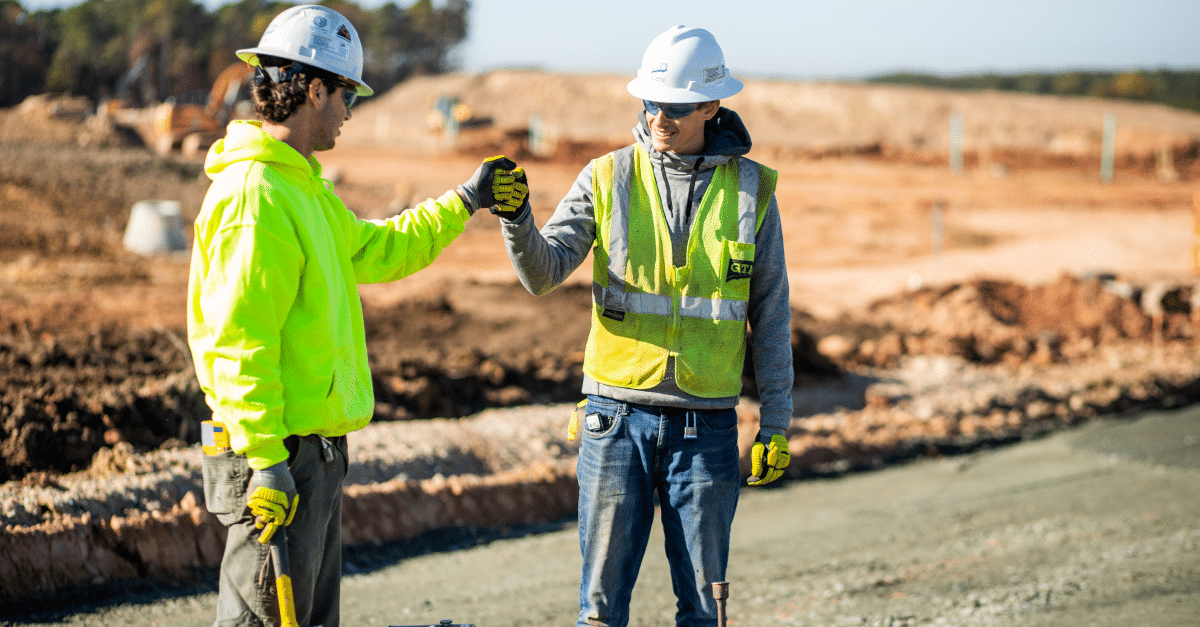See This Report about Geotechnical Engineering For Construction Projects
See This Report about Geotechnical Engineering For Construction Projects
Blog Article
Excitement About Geotechnical Engineering For Construction Projects
Table of ContentsLittle Known Questions About Geotechnical Engineering For Construction Projects.The 4-Minute Rule for Geotechnical Engineering For Construction ProjectsHow Geotechnical Engineering For Construction Projects can Save You Time, Stress, and Money.Geotechnical Engineering For Construction Projects Can Be Fun For EveryoneThings about Geotechnical Engineering For Construction Projects10 Simple Techniques For Geotechnical Engineering For Construction Projects
These attributes should be analyzed by geotechnical engineers to anticipate their activities under numerous scenarios., making this evaluation essential.A geotechnical engineer will certainly check out dirt to identify the bearing ability of the planet and advise appropriate foundation types, such as superficial structures, deep foundations like stacks, or specialized services like drifting foundations for soft dirts. Understanding the attributes and activities of soil and rock, along with exactly how they engage with constructions that have actually been erected on or within them, is among the main descriptions for why geotechnical engineering is essential.
Along with architectural preparation and building, geotechnical design is also crucial to the repair and maintenance of pre-existing structures. Age-related deterioration or extra troubles can influence a framework's stability and efficiency. Ecological protection is achieved with geotechnical design. Knowledge in air, water, and soil top quality maintenance is used by geotechnical designers to lessen the negative impacts of projects.
To sum up, geotechnical engineering is an essential discipline that preserves the resilience and stability of civil infrastructure. Geotechnical engineers add to making building jobs effective all over the world by recognizing the behaviour of earth products and using proper preparation strategies.
9 Simple Techniques For Geotechnical Engineering For Construction Projects
By examining soil, rock, and subsurface conditions, geotechnical engineers provide necessary understandings that assist in the layout, building, and upkeep of structures and infrastructure.
Not known Facts About Geotechnical Engineering For Construction Projects
Research laboratory testing: Figuring out the buildings of soil and rock. Numerous high-profile construction tasks have successfully utilized geotechnical engineering to guarantee their security and safety.

As a leader in geotechnical engineering, BECC Inc. is committed to providing ingenious and efficient services that fulfill the highest possible requirements of quality and safety. For more details on just how BECC Inc. can support your following construction task, contact us today and allow us aid you improve solid ground.
William Rankine, an engineer and physicist, established an alternative to Coulomb's earth pressure concept. Albert Atterberg created the clay consistency indices that are still utilized today for soil category. In 1885, Osborne Reynolds acknowledged that shearing reasons volumetric extension of dense products and contraction of loose granular products. Modern geotechnical design is stated to have actually begun in 1925 with the magazine of Erdbaumechanik by Karl von Terzaghi, a mechanical engineer and rock hound.
Indicators on Geotechnical Engineering For Construction Projects You Need To Know
Terzaghi additionally established the structure for concepts of birthing capability of foundations, and the theory for forecast of the price of negotiation of clay layers due to combination. Afterwards, Maurice Biot totally established the three-dimensional dirt consolidation concept, prolonging the one-dimensional design formerly established by Terzaghi to extra basic hypotheses and presenting the set of basic formulas of Poroelasticity.
Geotechnical designers check out and determine the homes of subsurface conditions and materials.
What Does Geotechnical Engineering For Construction Projects Do?
, which makes use of a thick-walled split spoon sampler, is the most typical way to accumulate disturbed samples.

Typically, the user interface's specific geometry is unidentified, and a streamlined user interface geometry is thought. Finite slopes browse around this site need find out here now three-dimensional versions to be evaluated, so most slopes are evaluated thinking that they are considerably vast and can be represented by two-dimensional models.
All about Geotechnical Engineering For Construction Projects
Creating the style based on a working theory of actions expected under the most probable conditions. Selection of quantities to be observed as building earnings and determining their expected values based on the working hypothesis under the most undesirable conditions.
Dimension of amounts and analysis of actual conditions. Layout adjustment per real conditions The empirical approach appropriates for building that has currently started when an unforeseen development happens or when a failing or crash looms or has actually currently taken place. It disagrees for jobs whose design can not be changed during building and construction.
Report this page